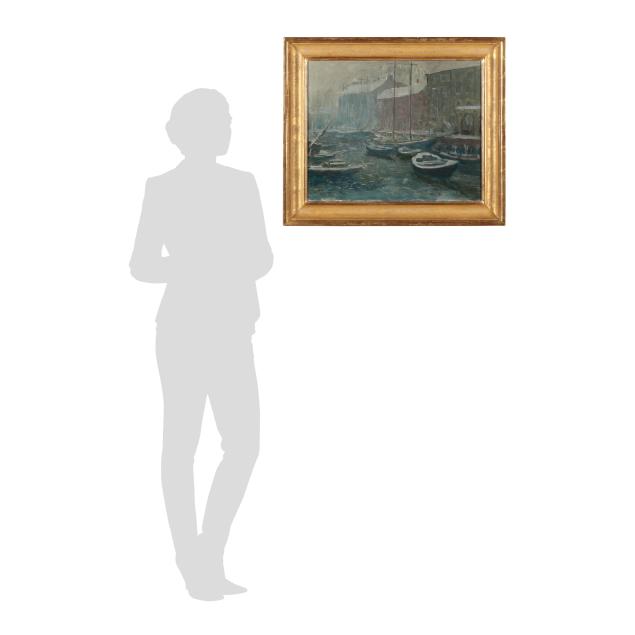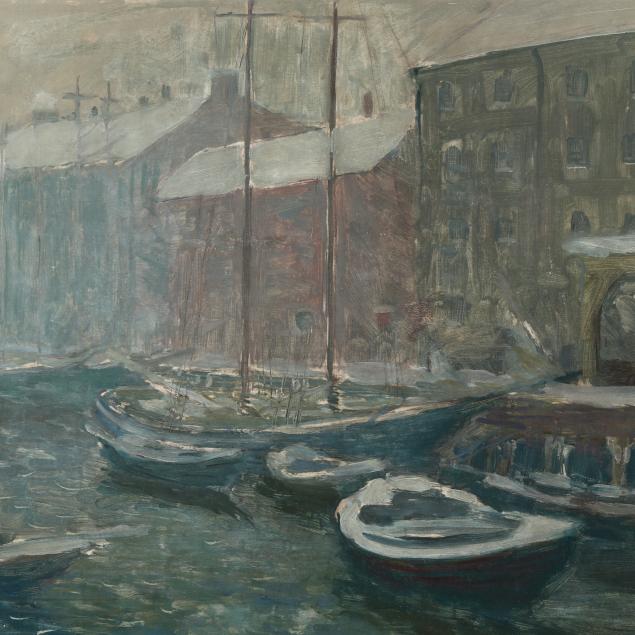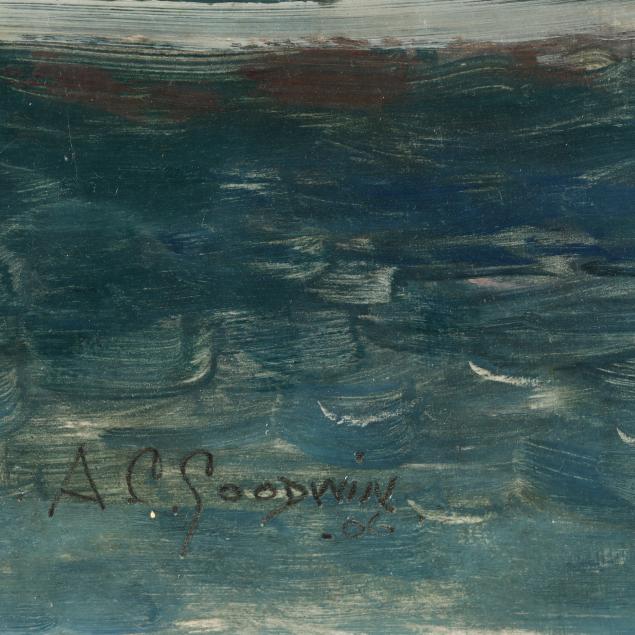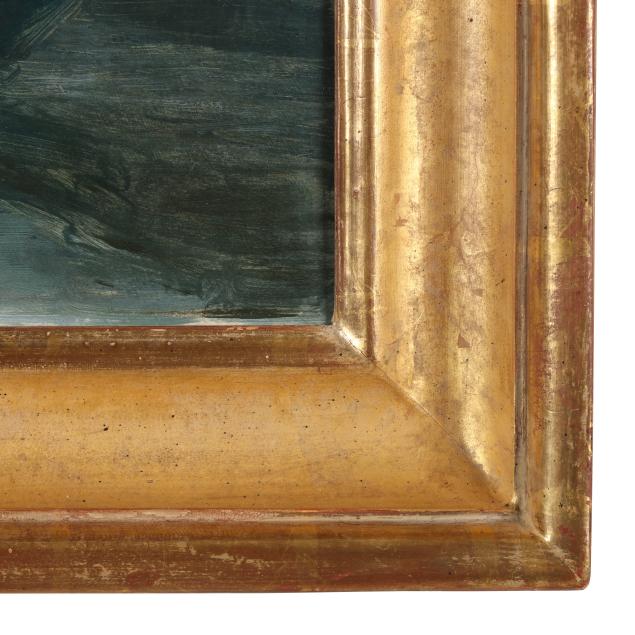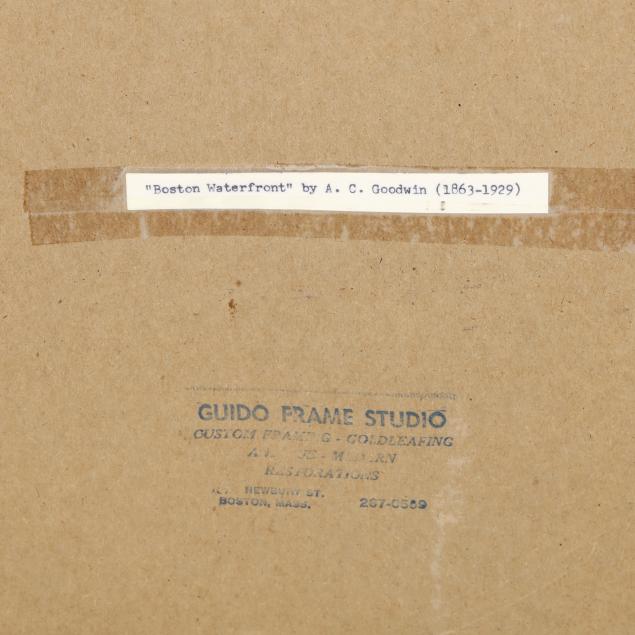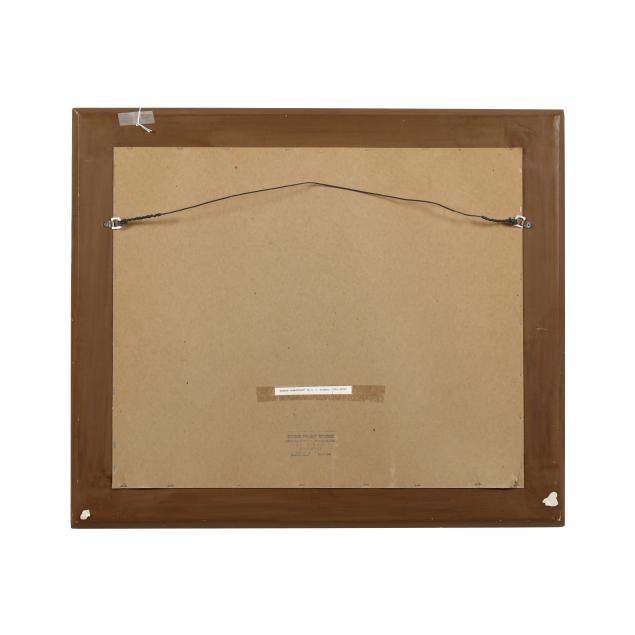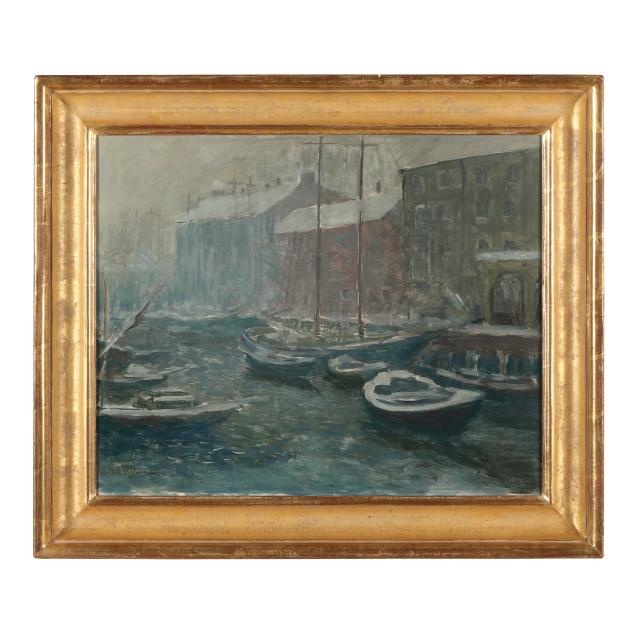
Lot 3071
Arthur Clifton Goodwin (American, 1864-1929), Boston Waterfront
Explore more items like this one.
Visit our Fine Art Department Fine Art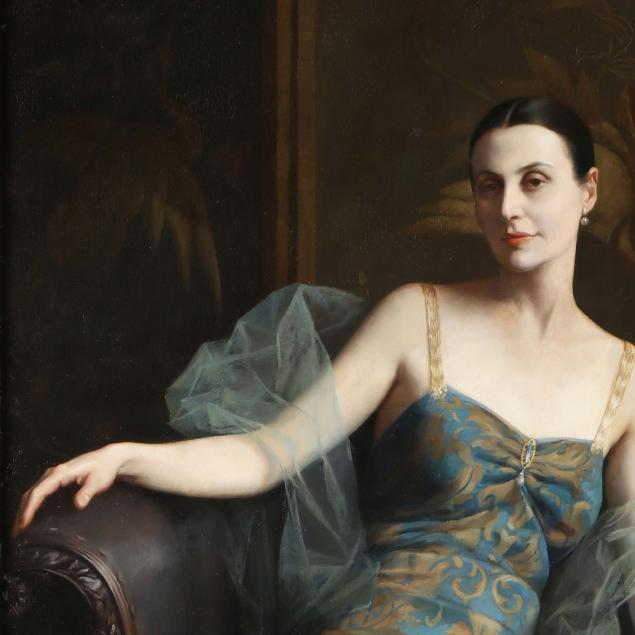
Lot Details & Additional Photographs
Board sight 18 1/2 x 22 7/8 in.; Frame dimensions 25 x 29 in.
Boston artist Arthur Clifton Goodwin began painting at the age of thirty. He was a self-taught Impressionist and follower of the Ashcan School led by Robert Henri. Over his 20-year career in Boston, Goodwin gained notoriety for his work. Childe Hassam described Goodwin as "the greatest painter in Boston." By 1921, Goodwin left Boston for New York City and opened a studio on Washington Square. He and his wife later lived in Chatham, New York where he painted many landscapes. His failed marriage prompted a return to Boston in 1929, with ambitions to travel to Paris. Goodwin took up a lifestyle of alcoholism that ultimately led to his death shortly after. He was found dead in his home with his trunk fully packed and a ticket to Paris in his pocket.
Goodwin was a member of the Guild of Boston Artists and the Boston Society of Watercolor Painters. He exhibited at the Guild of Boston Artists; the PAFA; Doll & Richards Gallery, Boston; the Boston Art Club; the Corcoran Gallery, Washington, DC; and Milch Galleries, New York. His work is represented at the Museum of Fine Arts, Boston; Union Club, Boston; St. Botolph Club, Boston; Addison Gallery of Art, Andover, Massachusetts; and Colby College, Maine. In 1974, the Museum of Fine Arts, Boston, honored the artist with a retrospective solo show. Since then, his works have been sought after by institutions and private collectors.
Good estate condition, small abrasion and scratch at upper left corner.
